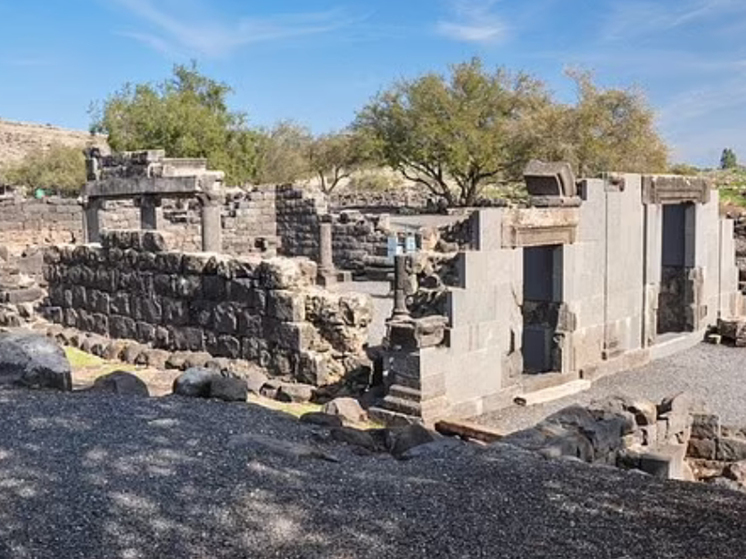«This is definitely one of the most important excavations»
Archaeologists may have proven the existence of a long-lost temple where Jesus Christ is said to have performed miracles. Several New Testament passages tell of the Savior preaching and healing the sick in a synagogue in the ancient Israeli city of Chorazin.
 Photo: holylandphotos.org
Photo: holylandphotos.org
Jews from all over the world visit the holy site in the Korazim National Park in the north of the country, where, according to historical records, the temple is located, writes the Daily Mail.
The synagogue, built in 380 CE, was discovered in the early 1900s, but until now there was no physical evidence linking it to the time of Jesus.
During excavations of the synagogue, discovered in 1905, a team of archaeologists discovered the ruins of an even older temple buried underneath them, the Daily Mail reports.
"This is a groundbreaking discovery. I've done excavations all over the world and for me this is definitely one of the most important excavations I've ever led," said lead archaeologist Ahiya Cohen-Tavor of Dagesh Tourist Archaeology.
Cohen-Tavor and his team removed the floor of the third-century ruins, revealing giant boulders that had been laid in a specific pattern. The team of archaeologists set to work removing the giant stones and discovered pottery, coins and cooking utensils nestled between them.
«I can't date the stone itself, when it was placed here,» Cohen-Tavor says in a YouTube video detailing the discovery, which occurred in 2022. «What I can date is the pottery and hopefully the coins that were found between the stones, and definitely what's underneath them. Anything that I find between these stones is from the time the synagogue was built here.»
During the video, he laid out a collection of pottery that he determined dates to the first century.
Cohen-Tavor said the giant stone blocks dug into the ground and the artifacts were the clearest evidence of first-century dwellings ever found in the region.
What was found at the site is only a hint of a first-century synagogue, but archaeologists believe the artifacts will soon confirm their suspicions.
“The Gospel of Matthew identifies the place as Chorazin, where the synagogue where Jesus taught was located, – writes the Daily Mail. – However, He also cursed the city after the locals rejected Him and His teaching.”
”Then he began to reproach the cities in which most of his great works had been done for not repenting,” the holy book says.”
”Woe to you, Chorazin! Woe to you, Bethsaida! For if the great works that have been done in you had been done in Tyre and Sidon, they would have repented long ago in sackcloth and ashes.”
At the time, Tyre and Sidon were considered pagan cities, writes the Daily Mail.”
The third-century synagogue was discovered in 1905 in what is now the Korazim National Park. Cohen-Tavor noted that previous excavations may have mistaken the giant boulders for simple rock, possibly allowing the first-century ruins to go unnoticed.
The structure was built of basalt stones and decorated with Jewish motifs. According to tradition, it had three entrances, all facing south, toward Jerusalem.
Previous excavations have uncovered a stone seat used by a Torah reader, which has been called the Chair of Moses.
Historical records from the early 4th century say that Chorazin is two miles from Capernaum, where Jesus was believed to have walked. And that path is still visible today.
In addition to the long-lost synagogue, the Bible also mentions the site of Moses. Matthew 23:1-2 says, «Then Jesus turned to the crowds and his disciples and said, 'The scribes and Pharisees have sat in Moses' seat.'»
This was the chair where the rabbi and other leaders read from the Torah scrolls, taught, and made judgments, the Daily Mail explains.
All synagogues had such a seat, and when Jesus taught in the synagogues of Galilee, it is likely that he sat in the seat reserved for those in authority. A similar stone seat of Moses has been found in an ancient synagogue on the island of Delos in Greece. A seat of Moses has also been found in Hammat Tiberias, near Tiberias, on the shores of the Sea of Galilee.
























































Свежие комментарии